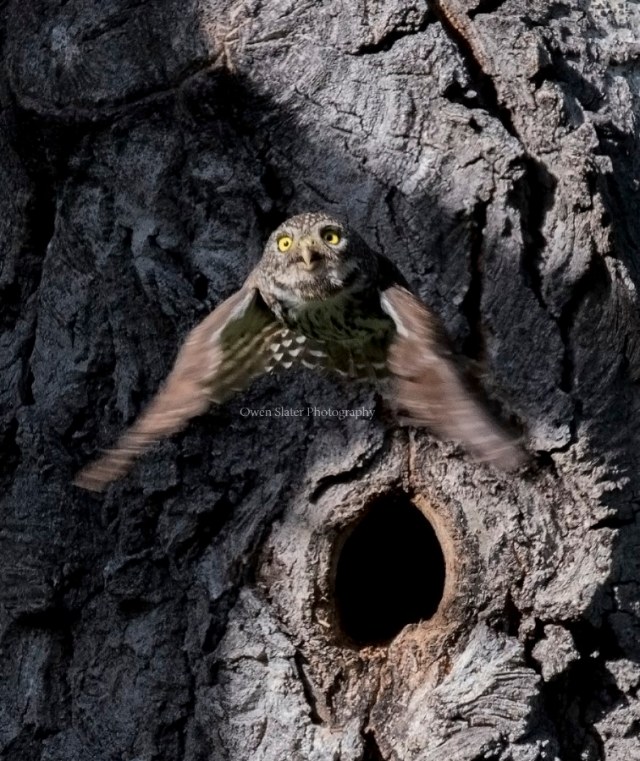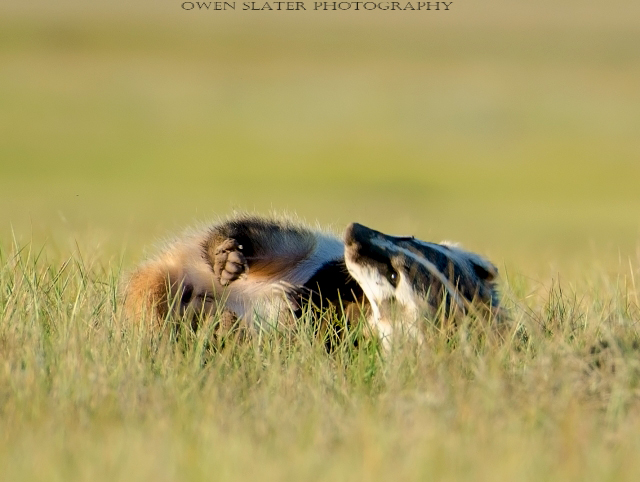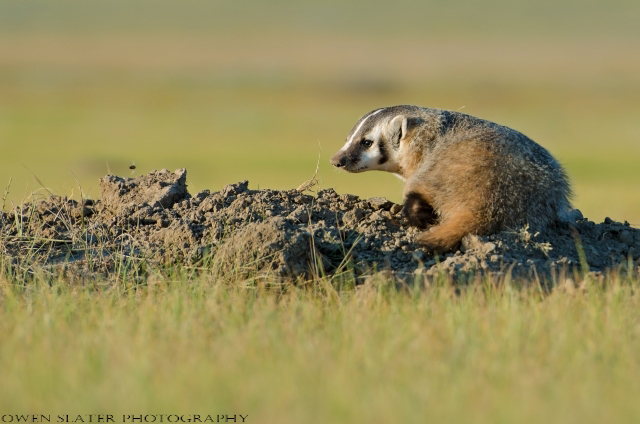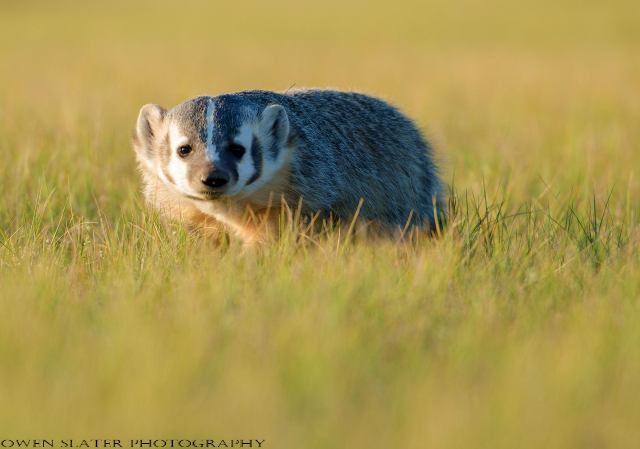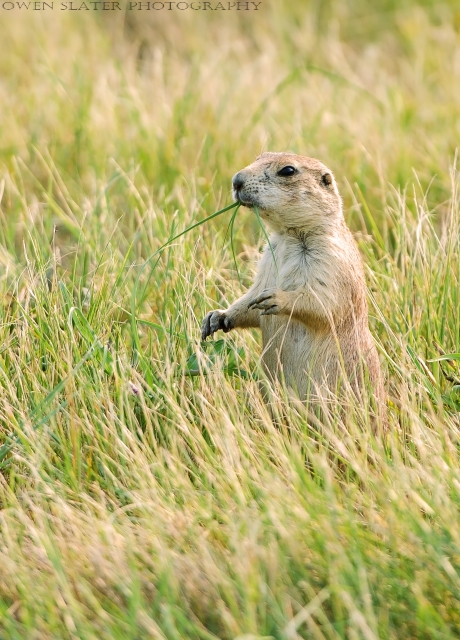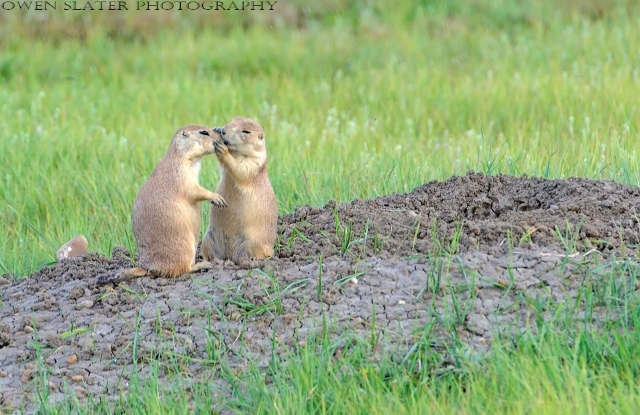The evening before we headed into Grasslands National Park I quickly flipped through a prairie dog book written by one of the leading experts in the field (Dr. John Hoogland), who has been studying them for over 30 years. In it he describes that while prairie dogs are known to routinely get eaten by a whole host of different predators it is extremely rare to witness a predation event. In fact, his team has only seen about a dozen in the 30 year period!
Having seen neither of these species before, would it be too much to ask to see something like this on my first day? I didn’t think so!
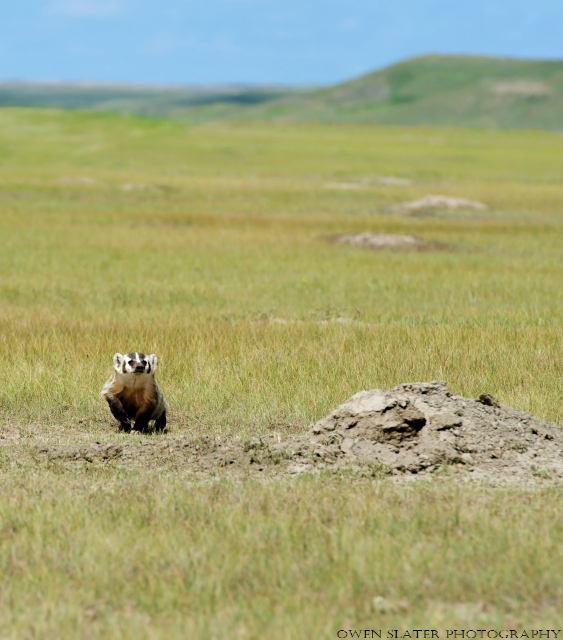
So with this little tidbit of information in my head I didn’t get too excited when I saw this badger eying up a prairie dog burrow. I was happy enough to just see her and her daughter pop their heads out above ground from time to time. But as time went on and they continued to work in tandem to isolate a series of prairie dog burrows my thoughts started to shift. Maybe today I was going to get a chance to see something pretty rare? The badgers certainly seemed determined. They continued to dig under the hot, mid-day sun. One stayed down in a prairie dog burrow they were excavating while the other worked to prevent any backdoor escapes by plugging the adjoining burrows with dirt.

Taking turns they alternated between underground digging and above ground burrow patrol making sure that all the other burrows remained packed down and listening for any sounds of the prairie dogs beneath them. When the mom was out doing her patrols she suddenly changed from relaxed to on high alert. She must have heard the muffled sounds of a prairie dog barking out alarm calls because she focused all of her attention on the ground next to one of the plugged burrows.
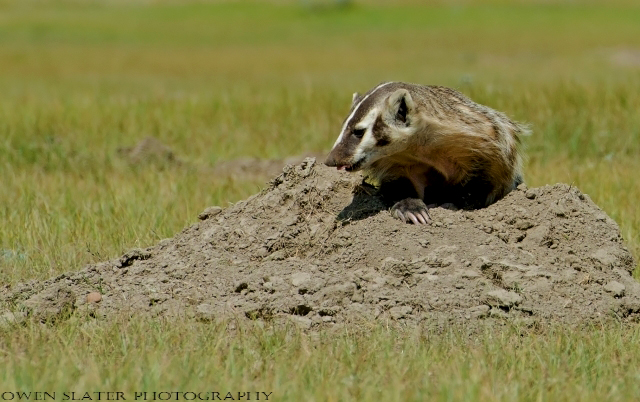
She carefully moved around the mound and stood motionless for several seconds before gently scratching at the ground with her back foot. She did this for a few seconds and then cocked her head and listened for a response. This was repeated several times and I suspect it was used to pinpoint the location of the prairie dog. Once she determined it was within range she launched herself at the entrance, flinging dirt into the air at an almost unbelievable rate as she quickly closed the gap on her prey.

After about 30 seconds the dirt stopped flying and there was a pause in the action. In my mind I figured she had caught a prairie dog and was likely eating it within the burrow. After all, I knew that the odds of actually seeing a predation event were slim to none! With these thoughts going through my head I started to relax my grip on the shutter release and I started readjusting the settings on my camera. I should have been more patient because as soon as I lost my focus she came bolting out of the burrow with a prairie dog clenched in her jaws! I fumbled with my camera as she started running towards the open burrow 15 feet away! I knew I had less than a few seconds to get a photo and I madly tracked her with my camera, firing off frame after frame before she disappeared out of sight. Thankfully she gave me just enough time to get the photo below!

I sat in the car dumbfounded with what I had just witnessed. I scrolled through the images checking to make sure I had captured a bit of the action but I didn’t have much time to rest. Within a few minutes the mom was back out and heading towards the burrow she had just pulled the prairie dog from. She briefly stopped to look in my direction, which was when I noticed the blood tinged right ear. She also had a cut on one of her toes so the prairie dog must have put up a bit of a fight. In the end it was no match for the badger duo.

She repacked the burrow with dirt to prevent any remaining prairie dogs from escaping and rejoined her daughter for dinner. Over the next few hours the badgers ate their hard fought meal in the confines of the burrow. It wasn’t until they had finished that they both emerged and relaxed at the entrance.
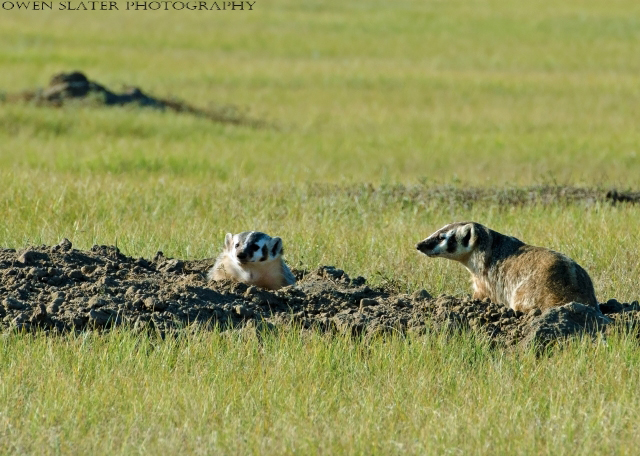
Luck continued to be on my side and for the next three days they made this burrow their temporary home. Each night they would emerge to play with one another and go on hunting expeditions but I never saw another successful hunt. I guess I shouldn’t have expected to but it was hard not to have increased expectations after a first encounter like this one!
 Often the deciding factor of whether the public and governments give money for wildlife conservation comes down to looks. Charismatic wildlife like bears, rhinos and big cats get a disproportionate amount of resources while birds, reptiles and amphibians, fish and the bottom of the barrel invertebrates struggle to even be noticed.
Often the deciding factor of whether the public and governments give money for wildlife conservation comes down to looks. Charismatic wildlife like bears, rhinos and big cats get a disproportionate amount of resources while birds, reptiles and amphibians, fish and the bottom of the barrel invertebrates struggle to even be noticed. 


